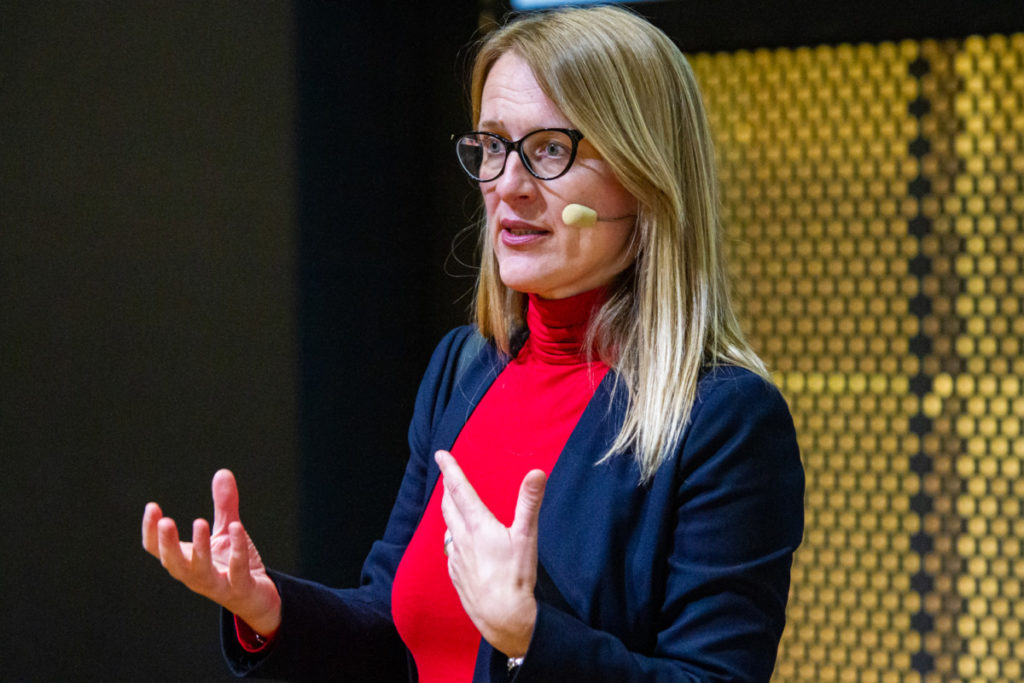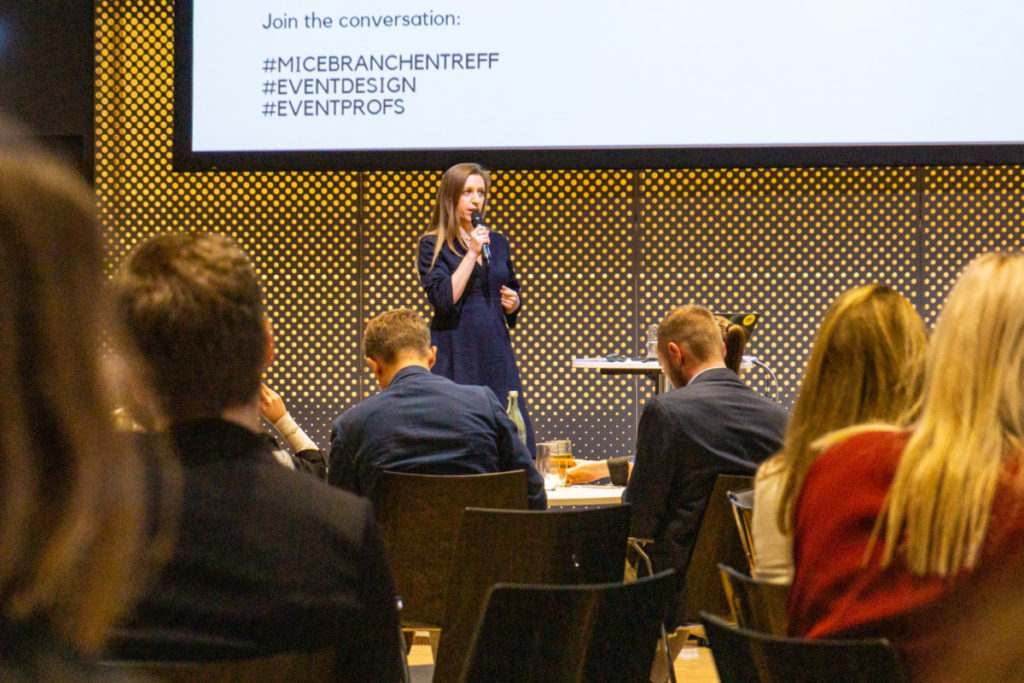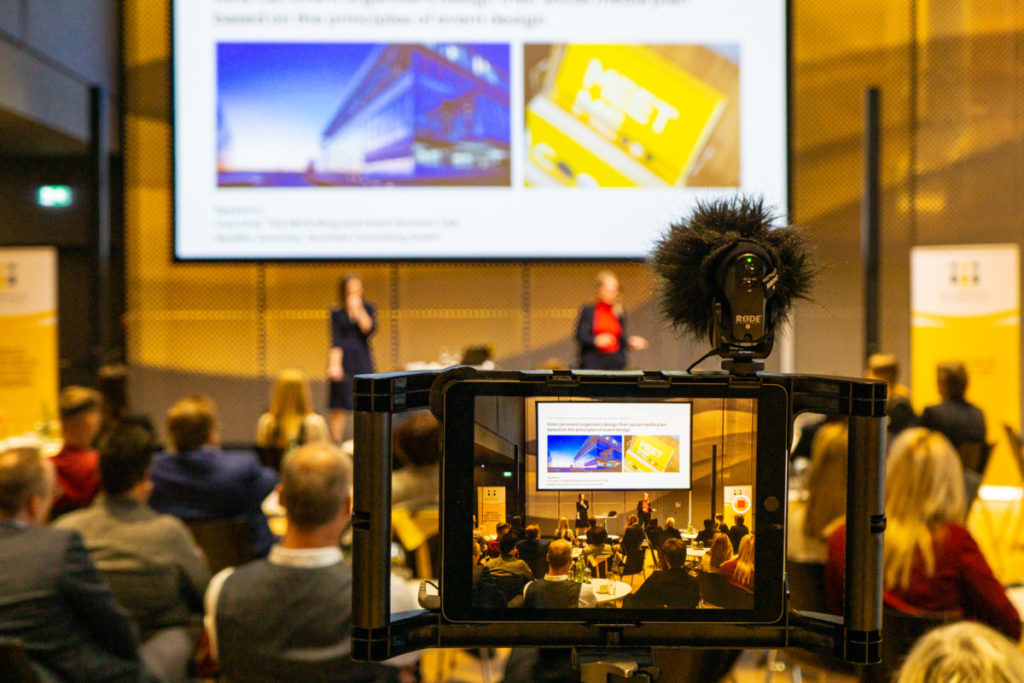The term ‘event designing’ is well known in our industry, and many event professionals also apply the principles of event design to their events. With the increasing attention of our audience shifting to online channels, it is equally important to highlight the process of an event on the various online channels, namely pre-, during and after an event takes place. Social media is on the rise, and looking at Instagram alone, it has significant reach—according to a Sprout Social report from April 2019, it has 1 billion users. This number is not to be ignored, and therefore event professionals when designing events for their ‘physical’ audiences need to take into account their online audience as well.
‘How can event organisers structure their social media plan based on the principles of event design?’ was the title of a talk I gave together with Natallia Zaremba from Zaremba Consulting at the recent Illerhaus Marketing MICE Branchentreff event in Konstanz. Natallia is based in Zurich, and her background is sales and marketing in the tourism and hospitality industry. With over 20 years’ experience, she quickly realised that the traditional sales presentations are not as effective as they used to be, and the product or service sold should be presented differently, namely adding an online element to the B2B sales channels. For one year, she has run her own company that offers consulting services in the MICE industry on online marketing and venue searches.
In our presentation, we focused on how to transfer the event experience to social media and ‘take your delegates’ on this digital journey.


Event design and visualisation
Event design has a lot to do with visualisation, and there is one term often used by event design professionals—‘visual thinking’. Similarly, social media is very much visual, with the use of photos and videos that can support event professionals by strengthening their presence, help maintain relationships with existent clients and opening up opportunities for finding new clients.
What platforms do you consider to be most important for showcasing the principles of event designing before, during and after an event?
Natallia highlighted the process of having three stages in sales—before, during and after. These stages also apply to event design and should be used in the online space. Natallia shared how she carries out marketing online, having a ‘light-motif’ to her activity and with the goal of the event as the core of this activity. Her strongest platform that she uses and sees traction from is Instagram, particularly via the ‘stories’ functionality.
What used to be 1–2 hours of sales meetings in the past with clients today is shortened to 15 minutes. To pack all the required information into this short time frame, Natallia uses visualisation; she ensures that her clients are attentive to follow her on Instagram—on the feed and stories. In addition to the images, there is written content that provides further context. A second platform of importance for Natallia is LinkedIn, which at the moment of writing provides a very good organic reach. When it comes to posting content, each piece of content should be adapted to the platform where it’s posted, meaning that it’s not recommended to share exactly the same content across multiple platforms.

For me, Instagram also plays an important role in content creation and promotion, particularly because the younger generation of event planners (which, according to my November 2019 Instagram analytics, forms 43% of 25–34-year-olds), who will be the decision-makers in the next few years. However, Instagram is not the most important platform for me, it is Twitter, where I was able to build the #eventprofstalk community around the weekly Twitter chat and live events. I started using Twitter in 2011 and was able to build my entire business on Twitter, after starting the Twitter chat in 2014. The chat takes place once a week, where there are six questions, and the audience can engage with the topic and network with each other. LinkedIn is also now growing in importance for me.

#eventdesign on Instagram
When searching for the hashtag #eventdesign on Instagram, the audience is introduced to almost two million posts of wedding decorations and flowers. Then, Natallia defined design, which means to her a ‘plan’ or ‘drawing’; design is an action to plan something, and it has little to do with event decoration, as can be seen under the #eventdesign hashtag on Instagram.
According to Natallia, addressing the topic of event design in the right context of event planning, meaning also for corporate events, has a ‘blank canvass’ for event professionals who want to be pioneers in this area, make a change and be successful with their online presence. The area of event design for corporate events is barely covered in the online space.

How to create the right content for the right platform?
As we mentioned previously, it’s not recommended to post exactly the same post on multiple platforms because each platform requires a customised approach.
According to Natallia, it starts by observing the platform and what is being posted there. It would also be a shame to post exactly the same content on multiple platforms, missing out on leveraging the full potential of each platform. Don’t we agree that each of us and our companies has more to say and share? Take LinkedIn as an example; it used to be highly conservative with a focus on career and CVs. Now, LinkedIn has undergone a transition and become more ‘relaxed’, with a focus on education, celebratory posts (e.g. team celebrations, introducing new team members, winning awards) and creating strong bonds with the online audience. Each post should have an ‘added value’ for the audience. When someone likes a post on LinkedIn, the platform promotes it to the 2nd and 3rd connection of those who posted it; therefore, making a post that has an educational added value is a great opportunity to reach new audiences and become known as a thought leader.
For example, when someone goes to an event and wants to share it on social media, instead of just saying ‘it was amazing,’ share what you have learnt, what the 2–3 major takeaways that you want your network to know about were: whether you met someone interesting, gained academic information, learned about the destination or venue etc.

When examining Instagram content, according to Natallia, it’s about the ‘scrolling’ culture, where you need to capture the viewer’s attention immediately with a story and/or image. On Instagram, it’s important to have a ‘story’ element and a ‘message’—when people look at the feed, they should understand what it is about. The images posted on the feed should be accompanied by some text underneath to support the storyline. ‘Photography is the story I fail to put into words’— Natallia used this quote from Destin Sparks to highlight the importance of a strong visual.
Facebook is a different story again, where it assumed that the older age group is predominantly spending its time. According to Natallia, on Facebook, it’s less about storytelling but rather for posting informative content and support with imagery. Natallia emphasised the importance of knowing your target audience today and thinking about the target audience of tomorrow.
For me, the majority of the content that I post on social media is also accompanied by a photo or video because visual content increases the engagement and click rates of the written word.
How do you find new clients on social media? Or perhaps, how do the clients find you?
In a B2B event context, professionals want to see tangible results—how possible is it to sell through social media? How is it possible to balance sales with being informative/educating/entertaining? Natallia suggested that the message that she now brings across to her target audience is about sharing information. Today, there shouldn’t be concern about sharing information publicly while being afraid that the competition will see it and potentially steal the idea—the event industry is becoming more transparent. The more we share, the more added value we create for the event industry as a whole. As a result, the industry opens up to have a dialogue—from ‘I want to sell for you’ to ‘I want to consult for you’—and what happens afterwards, it is open to both sides to decide.
Natallia has experienced that this approach of advising and getting into conversation generates more business than the one-sided mindset of ‘I want to sell for you.’ The exchange on social media goes beyond the event industry, where each one of us can also learn from other industries, such as fashion and automotive. Focus on consultancy over sales. Furthermore, and when possible, it’s important to personalise the message—be the ‘person’ behind the account instead of being an anonymous corporate entity.
How often should you post? How can event professionals plan their social media posts so that they involve the principle of event design?
According to Natallia, there are various strategies, and no one rule fits all. Natallia suggested to align it with the individual sales and marketing plan, and that it is important to have authentic and original content and introduce consistency. Be authentic and personal—the audience will value this.
For example, all sales and marketing activity carried out in the ‘traditional’ space can also be adapted to the online sphere. Event agencies, venues, hotels and destinations constantly have events taking place—why not post about them online? These events can also be communicated before they take place and show behind the scenes, for example, or document them A-Z. This documentation can be ‘replayed’ in 1–2 years’ time and introduce the product/ service to new audiences.
Regarding myself, I aim to post once a day at least on my main platforms: Twitter, Instagram and LinkedIn. When the Twitter chat takes place on Mondays, the discussion continues for many days, and otherwise, I will post images from past events, share blog articles or interact with the community.

How can event professionals stand out on social media?
Natallia creates ‘Instagrammable’ photos. These images require certain editing skills that she learned via online tutorials. Natallia noted that having an ‘Instagrammable feed’ can be both an advantage and disadvantage because she focuses on aesthetics, and that requires time when editing the photos. There are many editing tools and tutorials available online that event professionals can learn and practice. Natallia recommended applying at least minimal editing before posting a photo online. She notes that we are in one of the most exciting and visual industries in the world, and yet we fail to post visually appealing photos. The online engagement in the MICE industry is significantly lower compared to other industries. Visually appealing photos will also make the industry more appealing to people from other industries when they see such content. Even if sometimes, this is ‘vanilla’ content (i.e. a popular or ‘sweet’ piece of content that is less informative but very popular), it is intended to attract initial attention to engage with the account in the long run.
I also edit all of my photos because I find it extremely important. Basic editing means cropping and straitening, brightening or sharpening the images to make them more visually appealing and more engaging to interact with and share.
How can event planners take their community on the online journey and introduce the event design process?
Taking the customers on a journey, as much as the physical event itself, it’s important to generate engagement prior to the event. It’s an opportunity to engage with the target audience, and posting live from the event is also important for driving engagement for a company. Companies can demonstrate that they are actively involved, committed and have news to share (such as a new opening or a client win). It’s important to show presence. And post event, companies can share everything that has happened in a longer form of content, such as a blog post (see what I’m doing here ;)) or a video.
Don’t just say it was amazing or great; explain what it was that you particularly liked. For those who are not attending, they need more context regarding why an event was ‘great.’

What can event professionals post from an event?
According to Natallia, when starting out with little experience, it can be by re-posting content from fellow colleagues and other attendees in order to create a community spirit, highlighting the organisers, other delegates and speakers. That approach creates word of mouth, so when shared online, it might inspire others from new networks to attend the event. Community spirit increases the importance of an event.

Is it possible to generate new leads and acquire new customers on social media?
Do the potential customers interact with the content, or should the person behind the account actively look out for new potential clients? According to Natallia, it works both ways; the most important is that there is the ‘engagement’ element—be interested and be interesting. Until someone gets the courage to start posting, they should try and comment on the posts that inspire and engage them. This would be the first step. Hashtags are good for connecting around a mutual topic and finding new colleagues/clients—expand the network or lookout for people from the industry who are based abroad. Through finding the right people, engaging and getting into conversations, new partnerships begin.
From online, the discussion can then transition to offline. Therefore, live events will always be important. A couple of years ago, there was a trend for more video conferencing to save costs, and now live events are on the rise again because people want to meet to conduct business. Therefore, as Natallia noted, the platforms serve the event planners and not the other way around.

Photos: Thomas Loris




Hello Irina
Finally an article about advanced social media marketing. Events offer so many themes and content and event planners should consider the story behind the event as well. This includes sharing the right content on the right channel. In the end, it has to be a round thing that leads the participants to the event again and again. Thank you very much for this article.
Greetings
Valerie
Thank you Valerie for your valuable feedback, I highly appreciate your opinion, and always working towards providing added value and insights on the ‘advanced’ topics in regards to social media and events.